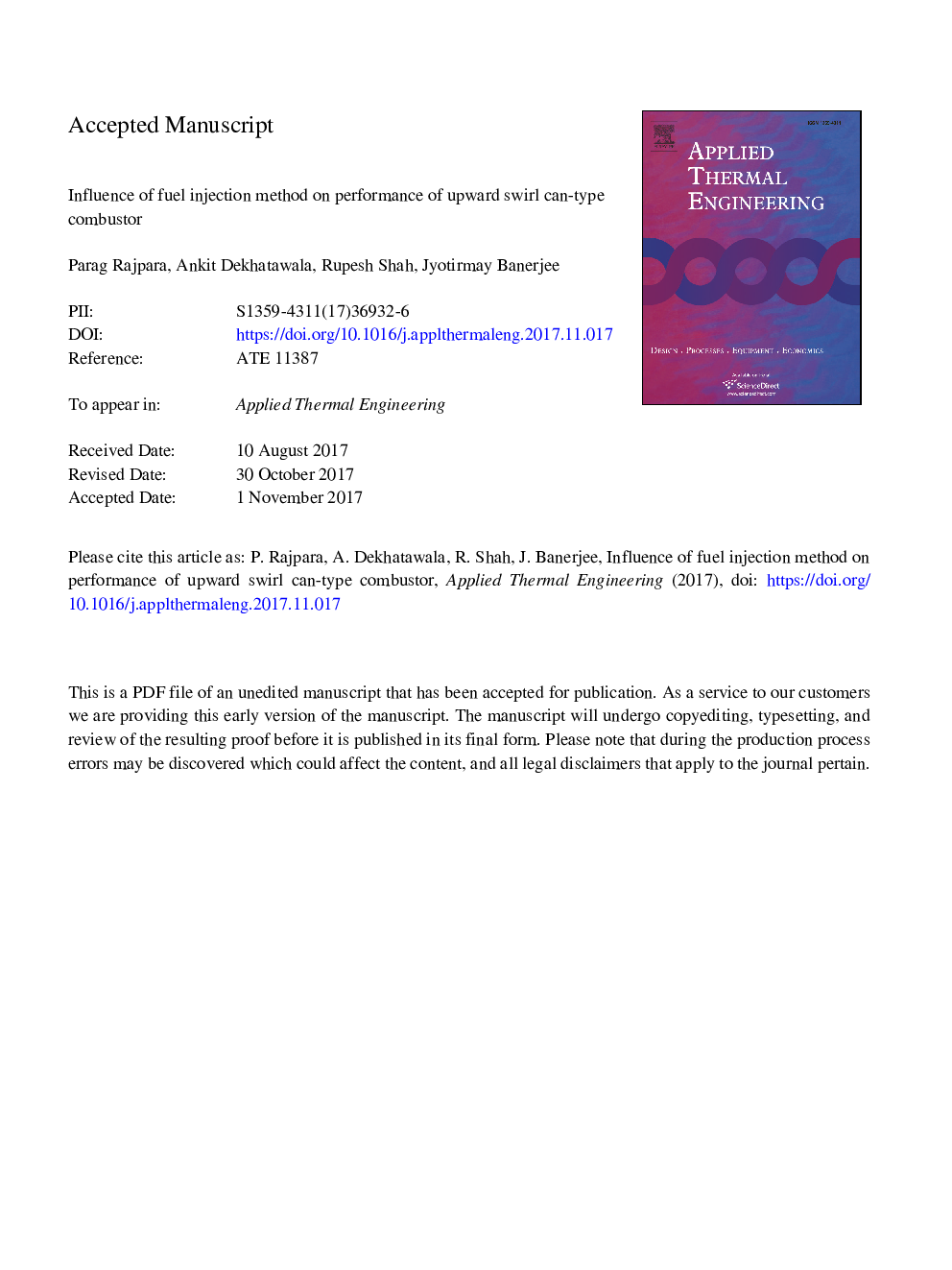| Article ID | Journal | Published Year | Pages | File Type |
|---|---|---|---|---|
| 7046371 | Applied Thermal Engineering | 2018 | 28 Pages |
Abstract
A new concept of reverse fuel injection is introduced to enhance the fuel-burning rate in upward swirl can-type gas turbine combustor. The existing combustor has conical shaped injector where fuel jets are arranged on 90° cone. In reverse fuel injection, the injectant exits the fuelling device in reverse axial direction towards the wall of hemispherical dome. The dome wall deaccelerates the fuel jet first and then fuel flows in all directions. The injector length is chosen as design variable for analysis of reverse fuel injection flow field. Combustion experiments are carried out for existing conical injector and different reverse fuel injectors. Large Eddy Simulations (LES) are carried out to simulate non-premixed turbulent combustion flow field and it is combined with Discrete Ordinates (DO) method for the radiation modelling. The turbulence-chemistry interaction is modelled using presumed shape Probability Density Function (PDF) approach. Results obtained show that reverse fuel injection provides rapid near field mixing and better fuel penetration. Improved mixing results into release of large amount of heat energy during combustion, which increases combustion efficiency and reduces CO emission level without adversely affecting the NOx emission level. The obtained results show that injector length influences mixing efficiency, residence time and emission level. There exists an optimal penetration height for efficient mixing and total pressure recovery efficiency and it is achieved when injector length is kept at 5â¯mm in the present study. Thermal imaging of outer wall of combustor demonstrates that reverse fuel injection does not adversely affect the wall temperature.
Related Topics
Physical Sciences and Engineering
Chemical Engineering
Fluid Flow and Transfer Processes
Authors
Parag Rajpara, Ankit Dekhatawala, Rupesh Shah, Jyotirmay Banerjee,
